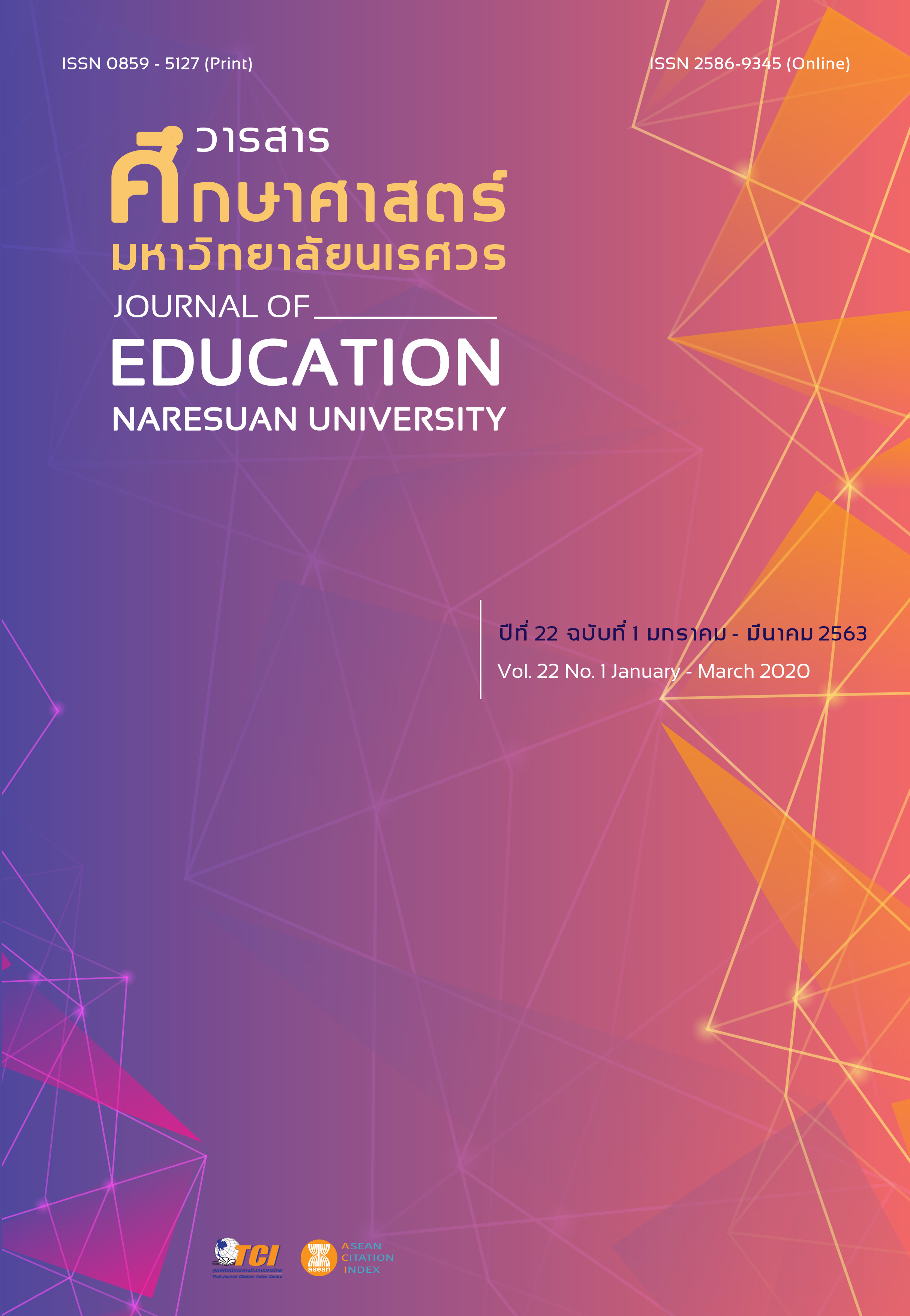DEVELOP FLIPPED CLASSROOM FOR ENCOURAGE SCIENCE COMMUNICATION SKILLS IN NERVOUS SYSTEM AND STRUCTURE AND MOVEMENT SYSTEM
Main Article Content
Abstract
This action research aimed to develop the flipped classroom model for encourage science communication skills in nervous system and structure and movement system contents. The participants were 24 students in semester 2, academic year 2016, in Phitsanulok Province. The research tools consisted of lesson plans, reflective journals, student learning journals and science communication observation form. The process of action research had been proceed 3 cycles, and this research used content analysis with method triangulation and resource triangulation for reliability of data. The results showed that; there were 4 steps in the flipped classroom model. Step 1: experiential engagement was activities in classroom in order to prepare the students to learn by themselves in next step. In step 2: concept exploration, the students must learn with 15-minutes videos and summarize what they learned. In step 3: meaning making, the students created scientific questions and answered others on Facebook. Finally, step 4: demonstration and application was activities in classroom that promote the students to use their knowledge for creating the learn task. Step 2 and step 3 focused on knowledge noting for science communication skill improvement through writing. In addition, step 1 and step 4 focused on working with others for science communication skill improvement through speaking.
Article Details
The owner of the article does not copy or violate any of its copyright. If any copyright infringement occurs or prosecution, in any case, the Editorial Board is not involved in all the rights to the owner of the article to be performed.
References
Auttaput, P., Sittiwong, T., & Teeraputon, D. (2017). The effects of using social network and active learning in the design and production of computer graphics course for undergraduate students. Journal of Education Naresuan University, 19(2), 145-154. [in Thai]
Brain, M. (2014). Back to the classroom – taking it beyond the content. Retrieved June 1, 2016, from https://flippedped4science.blogspot.com/2014/03/back-to-classroom-taking-it-beyond.html
Chaisuksung, S. (2012). Open the results of Thai student skills in 21st century. Retrieved June 1, 2016, from https://www.qlf.or.th/Mobile/Details?contentId=570 [in Thai]
Department of Academic Affairs. (1999). Authentic assessment (2nd ed.). Bangkok: Kurusapa Ladprao Printing. [in Thai]
Department of Academic Affairs. (2003). Implementation of basic education curriculum and learning management in science B.E. 2544. Bangkok: Kurusapa Ladprao Printing. [in Thai]
Erik, B., Chris, M., & Simon, P. (2012). Performance and perception in the flipped classroom. Springer science business media. New York: n.p.
Kiley, C. B. (2015). Evaluating student performance and perceptions in a flipped introductory undergraduate biology classroom. Boston: University of Massachusetts.
Jiraviboon, J. (2003). Manual of teacher and parent for students who have learning and reading problem. Bangkok: Kurusapa Ladprao Printing. [in Thai]
Paje, S. (2013). Flipped classroom – new classroom in 21st century. Retrieved June 19, 2016, from https://phd.mbuisc.ac.th/academic/flippedped%20classroom2.pdf [in Thai]
Panich, V. (2013). Teachers for students - creating a flipped classroom (2nd ed.). Bangkok: SR Printing Mass product. [in Thai]
Pattarawat, K. (2012). Open the results of Thai student skills in 21st century. Retrieved June 1, 2016, from https://www.qlf.or.th/Mobile/Details?contentId=570 [in Thai]
Piyawat, J. (2015). Flipped classroom model. Retrieved June 30, 2016, from https://cdn.gotoknow.org/assets/media/files/000/895/493/original_flippedped_classroom.pdf?1364460291 [in Thai]
Ruengrong, P., Jirawongpong, P., Manyum, W., Somyaroje, W., Moundet, S., & Srisurat C. (2014). Educational technology vs Thai teachers in 21st century. Journal of Panyapiwat, 5, 195-203. [in Thai]
Siripattanakunkajorn, S. (2012). Learning in 21st century. KMUTT Research and Development Journal, 2, 18-20. [in Thai]


